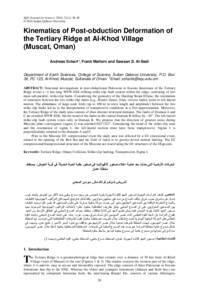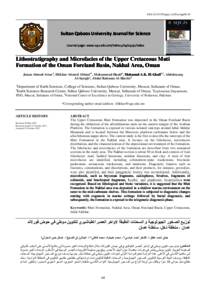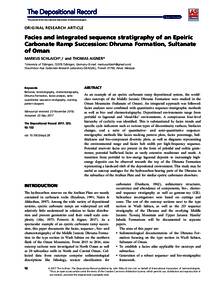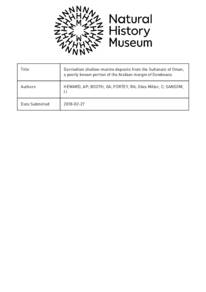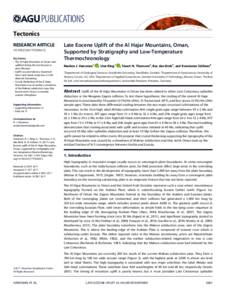Document
Complex fault-fold interactions during the growth of the Jabal Qusaybah anticline at the western tip of the Salakh Arch, Oman.
Identifier
DOI: 10.1002/2014TC003725
Contributors
Balsamo, F., Author
Clemenzi, L., Author
Mozafari, M., Author
Al-Kindy, M. H. N., Author
Solum, J., Author
Swennen, R., Author
Taberner, C., Author
Tueckmantel, C., Author
Publisher
Blackwell.
Gregorian
2015-03
Language
English
English abstract
The Jabal Qusaybah anticline is located at the western end of the Salakh Arch, a major salient in the foothills of the Oman Mountains. We performed a structural and petrographical-geochemical study of vein sets and fault zones associated with the development of this anticline. Our data illustrate a complex deformation pattern both in space and time, characterized by the unusual presence of widespread NE-SW left-lateral strike-slip fault zones trending oblique to the E-W fold axial strike, and of abundant and well-developed N-S fold-perpendicular extensional fault zones associated with axial bulging and dilation, well developed in the central region of the anticlinal crest. We propose a three-stage evolution for the Jabal Qusaybah anticline, starting with prefolding jointing in the foreland of the late Cretaceous Oman Mountains, and followed by development of extensional faulting in Campanian times. Positive inversion of the Qusaybah Fault, possibly in Miocene times, caused development of a layer-parallel shortening fabric and amplification the Jabal Qusaybah Anticline, in concomitance with the activity of NE-SW left-lateral strike-slip fault zones that triggered N-S, fold-perpendicular extensional faulting, particularly in the axial bump of the anticline. The final evolutionary stage was characterized by further amplification of the axial bump and related N-S extensional fracturing and by uplift and exhumation. To explain the complex noncylindrical fault-fold interactions in the study anticline, we tentatively propose that they were triggered by near foredeep-parallel tapering of the sedimentary/tectonic overburden of the Ara evaporites.
Member of
ISSN
0278-7407
Resource URL
Category
Journal articles


